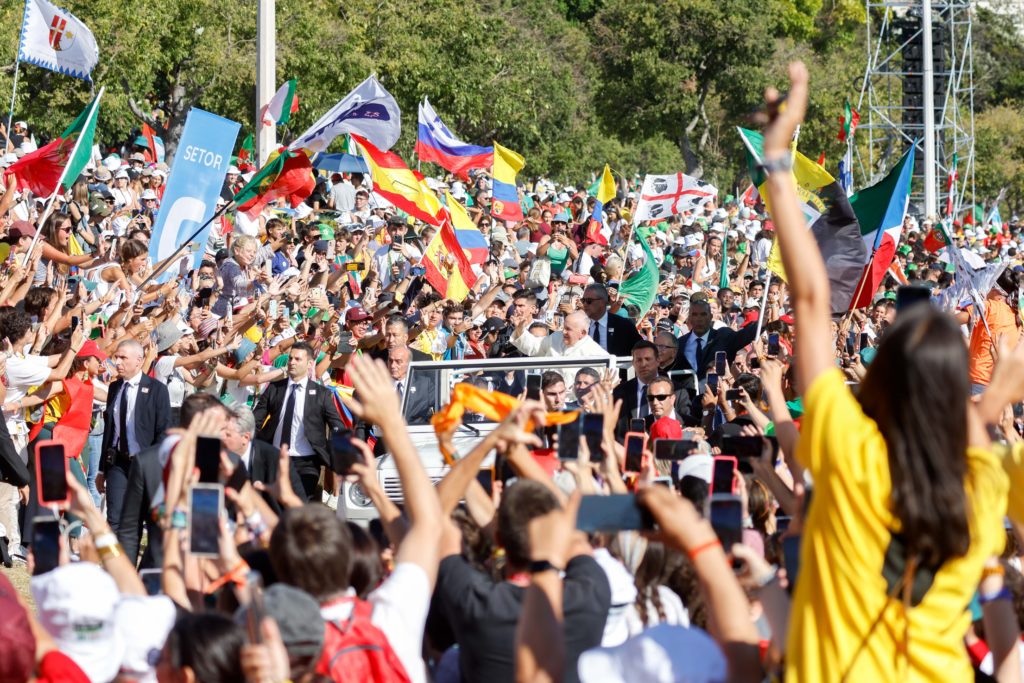ROME — My wife and I attend an urban parish in Rome’s Prati neighborhood. It’s a mostly white-collar area, dominated by lawyers and TV and film production firms, but there are also plenty of blue-collar types who clean the offices of the upper crust, tend their lawns, and run the stores where they shop.
In other words, there’s a good cross-section of a big-city population, and that’s reflected in the parish. It’s a fairly thriving community, with standing-room-only crowds on Sundays and generally a healthy turnout even for daily Mass.
Geographically, the parish of Santa Maria Regina degli Apostoli is located just a mile from St. Peter’s Square, but honestly, most of the time it feels like the Vatican might as well be on another planet.
The homilies you hear aren’t focused on papal politics but on the Gospels and the ordinary details of daily life. You’re far more likely to get references to last night’s soccer game than to the latest “motu proprio,” and when you chat with people before or after Mass, the odds are awfully long that anything the pope has said or done will be mentioned.
On the rare occasion when the pope does come up — usually because someone asks what my wife and I do for a living — parishioners talk about the Vatican as an exotic, mysterious world, one they find fascinating but not especially relevant directly.
Bear in mind, these are people who live in the pope’s shadow every day.

I mention all this because of the many category mistakes journalists make about the Catholic Church, perhaps the most chronic is the assumption that levels of faith and practice are somehow a referendum on papal policy — i.e., that Catholics make decisions about whether to pray, to go to church, to believe in God, and so on, for primarily political reasons.
The point comes to mind in light of the recent World Youth Day in Lisbon, Portugal, which drew an astonishing 1.5 million young people to a vigil Saturday night and the concluding Mass Sunday morning in the city’s Parque Tejo.
World Youth Day, of course, is a cornerstone of the legacy of St. Pope John Paul II and has continued to thrive under both Pope Benedict XVI and now Pope Francis. From the point of view of a political interpretation of what drives Catholic behavior, that’s a deeply puzzling result.
For decades under John Paul and Benedict, secular pundits confidently pronounced that the conservative ethos of those papacies had to be alienating people and driving them away from the Church, especially youth who have more progressive attitudes on matters such as women, gay rights, and sexual morality.
Watching John Paul routinely draw wildly enthusiastic crowds of millions of fervent young believers, therefore, generated an epidemic of cognitive dissonance.
Conservative commentators today assert that for a religion to survive in the post-modern milieu, it has to be clear on its own identity, to make demands, and challenge the prevailing culture. A big tent form of faith, they assert, such as that espoused by Pope Francis, is destined to flounder, ending in a slide toward irrelevance.
For that crowd too, the sight of Francis presiding over a tidal wave of young humanity just doesn’t compute.
What both the liberal and conservative interpretations fail to grasp is that for most people, most of the time, the decisions they make about religious faith and practice have little to do with politics.
A middle-aged man struggling with a serious illness, for example, might return to the practice of faith because his life situation has forced him to ask deeper questions. An elderly woman, nourished by the faith in her youth, may take comfort in its rituals now, not to mention enjoying the company she finds when she goes to church. A married couple starting a family may want to give their children a solid moral foundation and think that going to Mass on at least a semi-regular basis is a way to do that.
As far as youth go, it may be that a particular young person, hungry for identity amid a vast cultural smorgasbord of options, may find expressions of faith attractive, such as going to Mass or praying the rosary. Another may discover in their local parish’s youth group an opportunity to channel their natural idealism into service by helping the poor, visiting the sick, offering comfort to migrants, or whatever else is on offer.
The common term in all those situations, and countless others like them, is that they have virtually nothing to do with the politics of left vs. right.
That’s not to say these folks don’t have opinions on issues such as the Latin Mass, women priests, blessing same-sex unions, how the Church ought to deal with China, or any of the other things Catholics argue about. It’s rather that those matters, however important they may be, don’t really drive choices about whether to show up on Sunday.
All this is compounded by the basic bit of Catholic wisdom, ratified and solidified over more than 2,000 years of history, that there’s a difference between the faith and the institutional Church. The two are related but distinct, and one’s feelings about the latter don’t generally have much to do with the former.
If the massive success of World Youth Day over what is now four decades should be teaching us anything, it isn’t that either the liberal or the conservative diagnosis of Catholicism is correct. It’s that neither one gets to the heart of the matter, and as long as they insist on seeing things through the lens of politics, they never will.

